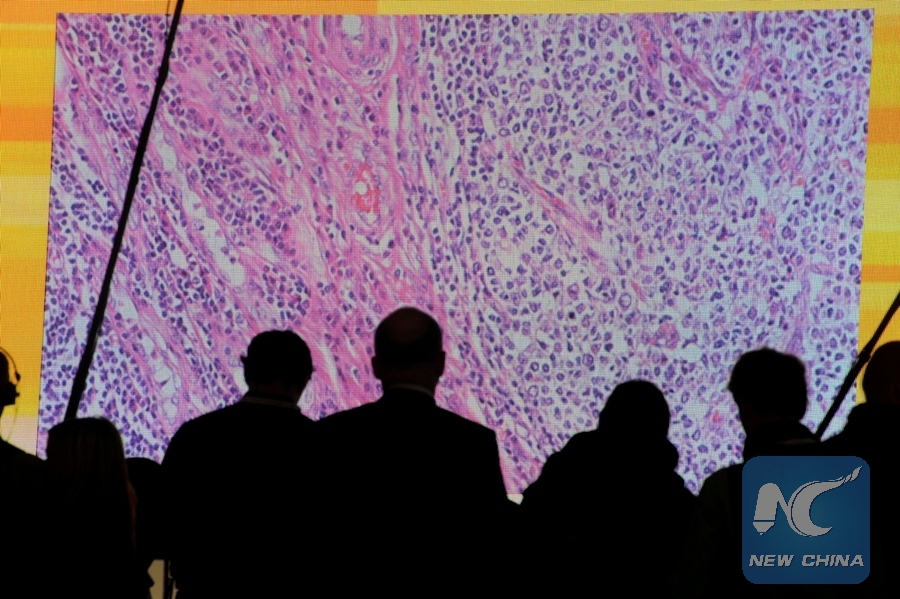
Cancer cells are seen on a large screen connected to a microscope at the CeBit computer fair in Hanover, Germany March 6, 2012. (REUTERS/Fabian Bimmer/File Photo)
WASHINGTON, July 5 (Xinhua) -- Researchers in Japan have developed a method capable of imaging how cancer cells spread through the body of a mouse, according to a new study published Wednesday.
The new method involved using chemical techniques to make whole mouse bodies and organs highly transparent, thus allowing cancer cells to be viewed multiplying within organs, including the lungs, intestines, and liver, and traveling through the body to and from new tumors in distant locales.
The study, published in the U.S. journal Cell Reports and led by Hiroki Ueda and Kohei Miyazono of the University of Tokyo, achieved single-cell resolution for cancer models that grow and metastasize in different ways.
The resulting images reveal cancerous colonies in enough detail to calculate their shapes, volumes, and distributions -- characteristics critical to distinguishing between patterns of metastasis, the research team said.
For example, the researchers used the platform to generate a whole-mouse scan of pancreatic cells spreading into the liver and throughout the abdomen.
Another set of images showed a healthy pair of lungs being gradually colonized by cancer cells over the course of two weeks, while a third probed relationships between cancer cells and blood vessels inside the brain.
"Picturing individual cancer cells during metastasis is challenging because they can be scattered all over an entire body," the team said.
"Locating the cancer cells relies on picking up signals from fluorescent proteins that they express, signals that must be preserved when applying tissue clearing methods in pursuit of higher resolution."
Given this difficulty, the researchers took a chemical mixture called Clear Unobstructed Brain/Body Imaging Cocktail (CUBIC) that they had previously developed for whole-body imaging preparation and optimized its composition for detecting and viewing cancer cells.
Upon using the modified mixture to turn tissues and vital organs clear, the researchers were able to pluck out fluorescence signals and locate cancer cells in places such as the liver, pancreas, and intestines.
According to the researchers, the new method is already providing a clearer view of certain mysterious steps of metastasis.
In particular, in order to reach a new site within the body and metastasize, a cancer cell must surf the bloodstream, entering and exiting through blood vessel walls.
"Most cancer cells are not so lucky and die during the trip," said Miyazono. "But images obtained through the new method suggest that cells treated with TGF-beta, a protein that regulates cellular growth and differentiation in humans and is produced in increased quantities by some cancers, are far more likely to survive the journey and form malignant outposts."
With preliminary investigations already underway, the researchers believed that cancer imaging and analysis using the CUBIC method "may contribute to addressing currently incurable metastatic diseases."

